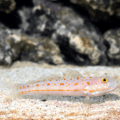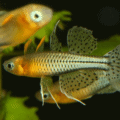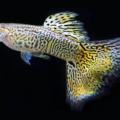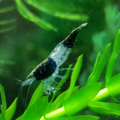In this article you will learn interesting facts about True Black Molly fish and provide your pets with the best aquarium care suitable for its unique features.
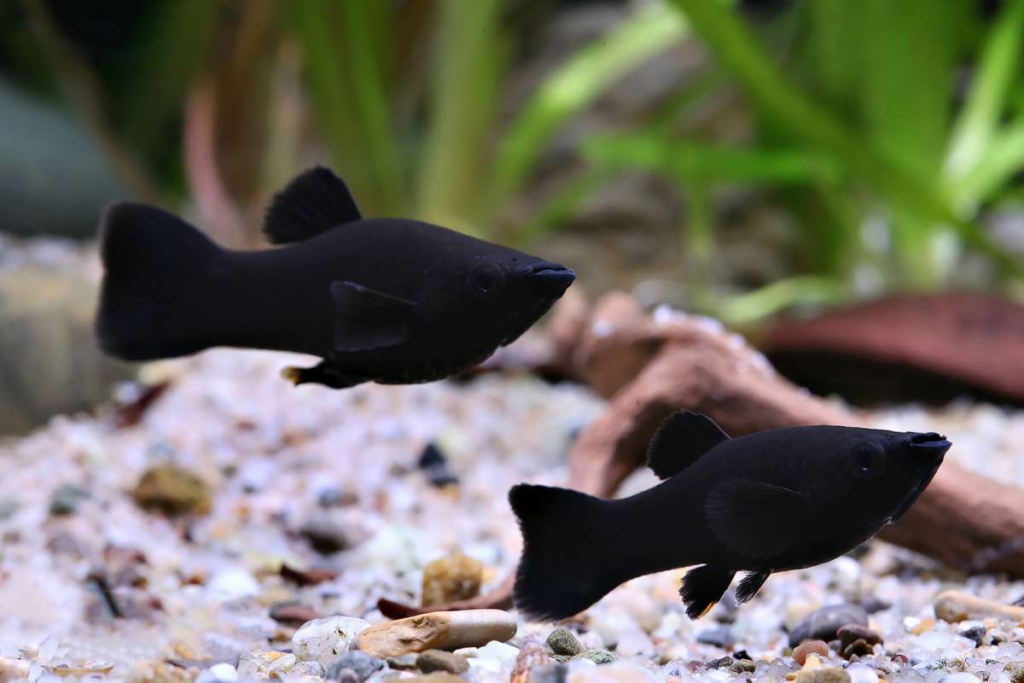
Introduction
Only a few aquarists appreciate the pure, smoky black scales of a jet-black freshwater fish like the True Black Molly, but the ones that get it are on to something unique.
Maybe you know this beauty by its scientific name, Poecilia sphenops, or you recognize its pure black body and watched its fascinating social interactions. You’re about to be wowed no matter what drew your attention to this species.
This Poecilia sphenops overview is the ultimate cheat code for giving your pets the best life. It contains recommendations on identification, tank setup, dietary needs, breeding, compatibility with other species, lifespan, and healthcare tips.
Welcome to your one-stop True Black Molly care guide!
See Also: 20 Hair Algae Eaters for a SPOTLESS Aquarium for more algae eating fish!
The Mesmerizing Appearance of True Black Molly
Let’s start with some good old-fashioned tips for identifying True Black Molly fish.
Size
An adult True Black Molly fish, including its large fins, grows between 3-5 inches (7.5-12.5cm) long. Male True Black Mollies are slender and have pointed anal fins, making them lean towards the shorter side of the length scale, while females are rounder and longer.
Color Pattern
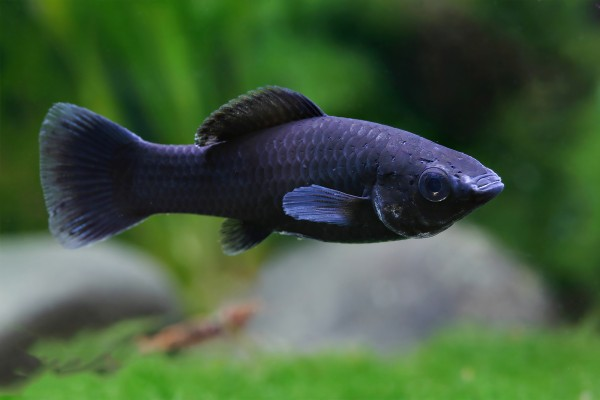
Other than their size and above mentioned features, there’s no dimorphism with True Black Molly fish. Both male and female variants are sleek black aquarium fish from their head to their tail fins.
Unique Traits
You’ll notice other unique characteristics of Poecilia sphenops: their social, peaceful, and active nature. True Black Mollies aren’t for you if you want quiet and calm fish because they are active swimmers who interact with their environment.
They’ll be friendly with humans and other compatible tank mates but won’t appreciate threats to their peace.
Here’s how to build the perfect environment for your True Black Molly.
Setting Up a Perfect Tank for True Black Molly
When creating a freshwater fish habitat design, there are certain factors you must consider. They’ll need clean water with suitable hardness depending on the species, regulated flow, and vegetation for aesthetics and comfort.
Tank Size and Layout
Because this species is an average-sized fish, it needs wide, rectangular tanks with 20 gallons of water per pair. This True Black Molly tank setup must have open swimming areas with plants, caves, and rocks for interaction.
Water Parameters
| Water Temperature | 72 – 82℉ |
| pH Level | 7 0 – 8.5 |
| Hardness | Moderate to Hard |
| Flow | Strong Current |
| Filtration | Heavy |
True Black Mollies produce a lot of waste, so they need strong filtration and frequent water changes to regulate waste in their tank.
Aquarium Decor
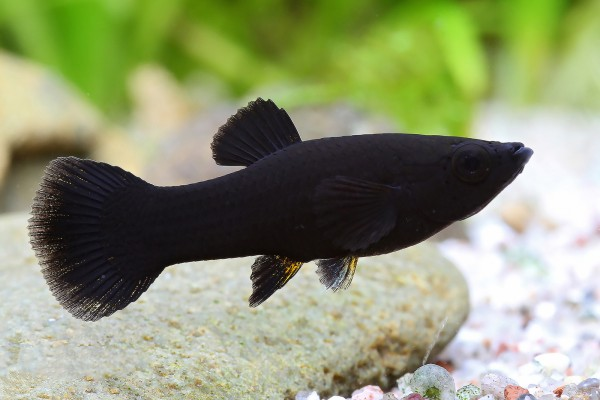
You’ll need live plants, smooth rocks, and driftwood for the decor, specifically the types that won’t hurt your pet’s body or complicate your Poecilia sphenops aquarium care.
Use this decor to create a comfortable shelter and encourage free oxygen flow.
| Live Plants | Amazon Sword (Broad leaves), Anacharis (natural look), Anubias (hardy), Hornwort (floater for fry care). |
| Driftwood | Azalea Root (for Tannin release), Malaysian wood, and Mopani Wood. |
| Rocks | Stony gray smooth gravel. |
| Substrate | Bright brown sand to highlight your fish’s black scales. |
Feeding True Black Molly: A Balanced Diet for Vibrant Health
Once you’ve provided the perfect home for your pets, your next concern is providing a balanced diet for aquarium fish. Each species has different food preferences, and for True Black Mollies, it’s an omnivorous diet.
Diet Suggestions
Poecilia sphenops nutrition should include food classes that improve their physical, internal, and mental health. Here are some examples.
- Staples: High-quality commercial flakes or pellets and algae wafers.
- Supplements: Algae Wafers.
- Live or frozen food: Brine shrimp and daphnia are used for protein, which builds muscles.
For more on feeding your aquatic pets check out The Ultimate Guide to Fish Food: Pros and Cons & Best Choices!
Feeding Tips
Feeding True Black Molly should follow a strict regimen of small portions of staples 2 – 3 times daily. Only feed them supplements twice weekly and in small portions, too, to prevent overfeeding.
Tank Mates for True Black Molly: Building a Harmonious Community
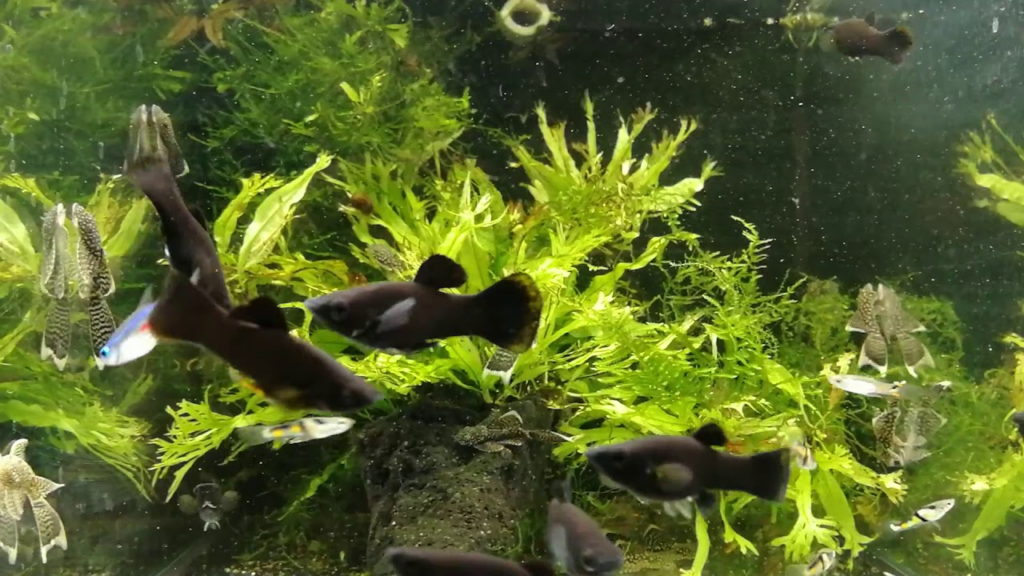
True Black Molly is a peaceful community fish that would add energy to the aquarium with their social traits and active swimming.
That doesn’t mean you shouldn’t prioritize choosing only compatible tank mates for True Black Molly fish.
Compatible Species
True Black Mollies are at their best in small groups of 3 – 5, and they get along with species that match their temperament, like Guppies, Swordtails, plecos, Corydoras, and Tetras.
Avoided Species
When deciding Poecilia sphenops compatibility, you must consider the other fish’s size and behavior. Avoid Cichlids and fin-nippers like Tiger Barbs.
Lifespan of True Black Molly: Caring for Long-Term Companions
Did you know that with proper True Black Molly lifespan care, they can live a maximum of 3 – 5 years? Scroll down for practical tips that’ll ensure their health and longevity.
Lifespan Factors
You would’ve seen hints of lifespan factors based on the freshwater fish health essentials highlighted from the beginning. But here’s a summary:
- They need consistent water quality because fluctuations lead to stress and other health issues.
- They need a balanced omnivorous diet to build their muscles, keep their scales healthy, and stabilize their moods.
- Heaving the best tank mates reduces the risk of stress from agitation, bullying, and predation.
Care Tips for Longevity
You can use these Poecilia sphenops longevity tips to ensure your pets live fully in good health.
- Regular tank maintenance reduces the risk of pollution, contamination, and stress. Always change at least 20 – 30% of the water in the tank every two weeks.
- Periodic Observations: Watch your pets for behavioral and physical changes that indicate mild to severe health issues.
Breeding True Black Molly: A Beginner’s Guide to Livebearers
Breeding True Black Mollies in captivity can be challenging because you must simulate their natural habitat and breeding season. You must note that this species is a livebearer, meaning there’s no egg stage in its reproduction.
Breeding Setup
Prepare the breeding tank with the same parameters given above, but note the following Poecilia sphenops livebearer tips:
- Add enough floating plants to protect the young fry.
- Use driftwood in the tank to encourage algae growth because the young fry are algae-eaters.
- Clean the tank daily to reduce the risk of diseases, as True Black Molly fry is extra sensitive.
Fry Care Tips
If you have experience in fry care for aquarium fish, you’re ready to take the next step. But, if you’re a beginner, pay close attention to the fry’s diet and environment for healthy growth. Feed them powdered food or baby brine shrimp as they grow larger.
You must be extra careful with your True Black Molly fry because they’re most sensitive at this age.
Preventing Health Issues in True Black Molly
You can give your best True Black Molly health care by following the Poecilia sphenops wellness tips in this guide. But note that they’re still prone to common health issues like fin rot, ich, and stress caused by overcrowding.
Check out How to Treat Ich Outbreaks in Your Freshwater Fish for more information on Ich!
Preventative Measures
Regular water changes, a varied diet, and avoiding overcrowding are the best practices for preventing freshwater fish diseases. Scroll up for more details.
Signs of Illness
Like other fish species, loss of appetite, faded coloration, or abnormal swimming behavior are common signs of illness in True Black Mollies. It could mean a bacterial infection, which you treat with antibacterial treatment, water parameters, and quality adjustments.
Conclusion
You can now confidently say you know True Black Molly essentials, whether as a beginner or pro aquarist. Identifying this species and understanding its adaptable nature helps you achieve freshwater fishkeeping success.
If you get lost, review this Poecilia sphenops aquarium guide for evergreen tips and recommendations. Ready to put in the necessary work to have this sleek True Black Molly in your tank?


